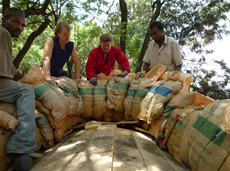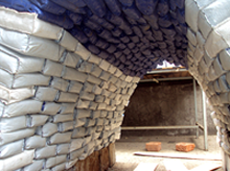UNHCR / DRC Refugee Shelter Research Project
 Momentarily, numerous refugee and help organizations such as the Danish Refugee Council (DRC), the UNHCR, USAID, and many others are providing more than 300.000 refugees shelters on Ethiopian territory. With regard to the political and economical situation in neighboring countries, a drastic increase of this number is expected in the coming years.
Momentarily, numerous refugee and help organizations such as the Danish Refugee Council (DRC), the UNHCR, USAID, and many others are providing more than 300.000 refugees shelters on Ethiopian territory. With regard to the political and economical situation in neighboring countries, a drastic increase of this number is expected in the coming years.Refugees lost their habitual residence, "owing to well-founded fear of being persecuted for reasons of race, religion, nationality, membership of a particular social group or political opinion.” (UNHCR) By the end of 2009 over 15 million people were classified as refugees. 80% are currently to be found in the developing world, demanding refugee shelter construction to be low cost but at the same time to fulfill minimum human, social and therefore architectural standards.
 Refugee camps are a settlement phenomenon with multidimensional aspects of organization, construction methodologies, technical, functional, and social infrastructure requirements, and environmental as well as economical constraints. Usually, the camps are large-scale semi-urban structures and represent an evolution of different building typologies, which over time develop from a short term emergency response to a transitional shelter evolving subsequently into a permanent architectural structure. So far, the average duration time of refugee residence is more than 20 years in Ethiopian camps.
Refugee camps are a settlement phenomenon with multidimensional aspects of organization, construction methodologies, technical, functional, and social infrastructure requirements, and environmental as well as economical constraints. Usually, the camps are large-scale semi-urban structures and represent an evolution of different building typologies, which over time develop from a short term emergency response to a transitional shelter evolving subsequently into a permanent architectural structure. So far, the average duration time of refugee residence is more than 20 years in Ethiopian camps.Following these premises, EiABC engaged with DRC and UNHCR into a research project to develop appropriate transitional shelter proto-typologies, which have the capacity to be upgraded to permanent structures. Aspects of project implementation such as local available materials, logistics, economic aspects, construction processes, capacity building possibilities, and construction manuals are researched and tested in full scale at EiABC campus with three different typologies: a sandbag shelter, recycling empty food bags and soil, a bamboo structure shelter using local growing bamboo as a sub-structure to be covered in various materials, and a shelter constructed with stone gabions, making use especially of the rich capacities in the northern part of Ethiopia. All typologies follow the premise to use local available materials and basic know-how to construct such shelters.
For more information visit EiABC campus for full scale demonstration.

